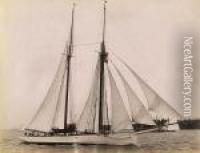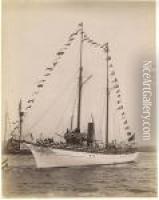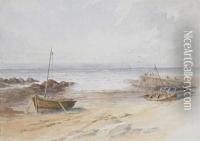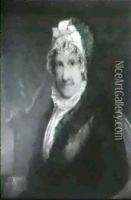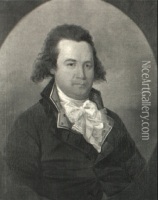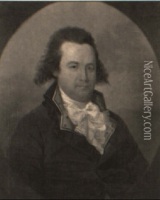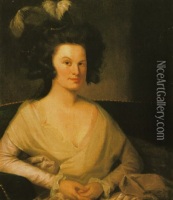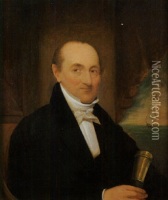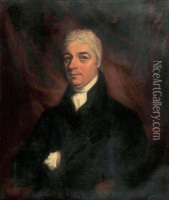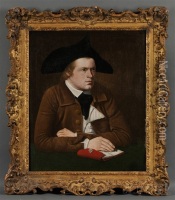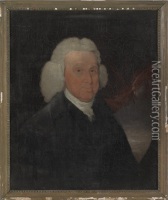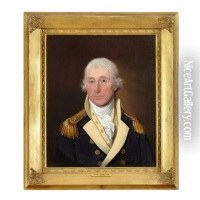John Johnston Paintings
John Johnston was an American artist known for his portrait paintings during the late 18th and early 19th centuries. Born in 1753, Johnston's early life and training are not well-documented, which is not uncommon for artists of his era. However, his work has been studied by art historians who have been able to piece together a modest understanding of his contributions to American art.
Johnston's work is often characterized by its straightforward realism and lack of pretension. He was active at a time when the new United States was forming its own cultural identity, separate from Europe. This was reflected in the arts, where there was a desire for a distinctly American expression that was free from European conventions. Johnston's portraits are valued for their historical significance as much as for their artistic merit.
Johnston was based in Boston, Massachusetts, and his clientele primarily consisted of middle-class Americans. His style reflects a transition from the more ornate and stylized portraiture of the colonial period to a simpler, more democratic aesthetic that was emerging in the early republic. Examples of his work include portraits of standing figures, often set against plain or lightly detailed backgrounds, which focus on the subject rather than elaborate settings or adornments.
John Johnston is not to be confused with other artists of similar names from different periods or regions. It’s important to note that historical records from this period can be sparse, and while we have some of his paintings and know of his influence, much of his life remains shrouded in mystery. Johnston passed away in 1818, but his work continues to be studied and appreciated for its role in the development of American portraiture. His paintings can be found in various historical societies and museums in the United States.


